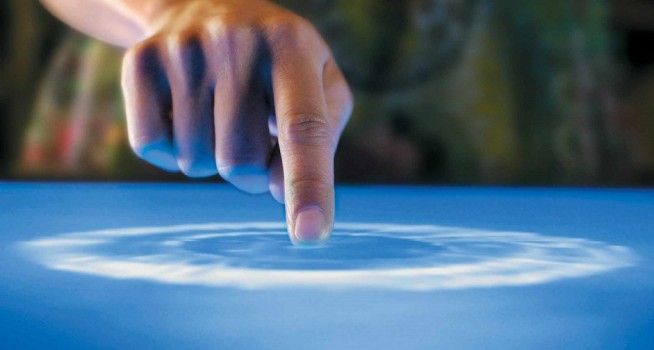You only have to see this YouTube video of a child attempting to look through a magazine by “swiping” the pictures to know that Apple’s iPhone and the advent of universally usable touch interaction has truly changed the world.
People just want to touch.
We’ve seen this done badly in quite a few applications, most notably ATMs and kiosks that provide a combination of hard and soft keys, where you need to push a hard button to do one thing, then switch to an on-screen soft button for another.
And of course we’ve seen the evolution of it being done very well from the first generation iPhone, to the iPad, and on to a plethora of competing tablets and smartphones. Then last year in an uncharacteristically bold move even Microsoft, the behemoth behind the most prevalent operating system in the world, reset the paradigm of personal computing with Windows 8, an OS optimized entirely for touch.
Like it or loathe it, this was a monumental shift and one that signaled their unparalleled vote of confidence in touch and what they see as the desire of the world’s users to interact with software by physically touching it.
What has been played down by mainstream media is that, while the world has been adopting and coming to grips with the world of touch-SCREEN interfaces, the true digital innovators have been developing alternative technology and inviting the world to touch everything around them.
What was once quite an aspirational, almost fantasy vision is now becoming reality. I can still remember my reaction when I first watched that futuristic Corning video on how screens and our interactions with them would no longer be confined to devices. I was at once amazed, then dismissive, then a little hungry but ultimately I came away excited.
Last night as I watched this demo of a new device from Fujitsu that takes this from dream to reality, I was once again gripped by that excitement as I started to think about the possible applications of this technology.
We’ve seen this type of technology used in some truly amazing ways but in the same way that astounding gesture-based interactions have become a reality in our own homes the practical applications of touch and gesture interactions in our lives are set to revolutionise how we go about even the most mundane of tasks.
Tom Cruise’s shenanigans on Minority Report might have seemed far-fetched and laughable to many at the time (probably because it was in the context of Cruise attempting to act) but this is no longer a real possibility.
It’s today.
Now. Where’s my flying car??!














Something you might also find interesting is a company called Tactus has created a dynamic touch screen where buttons actually form out of the screen.
http://www.tactustechnology.com/technology.html